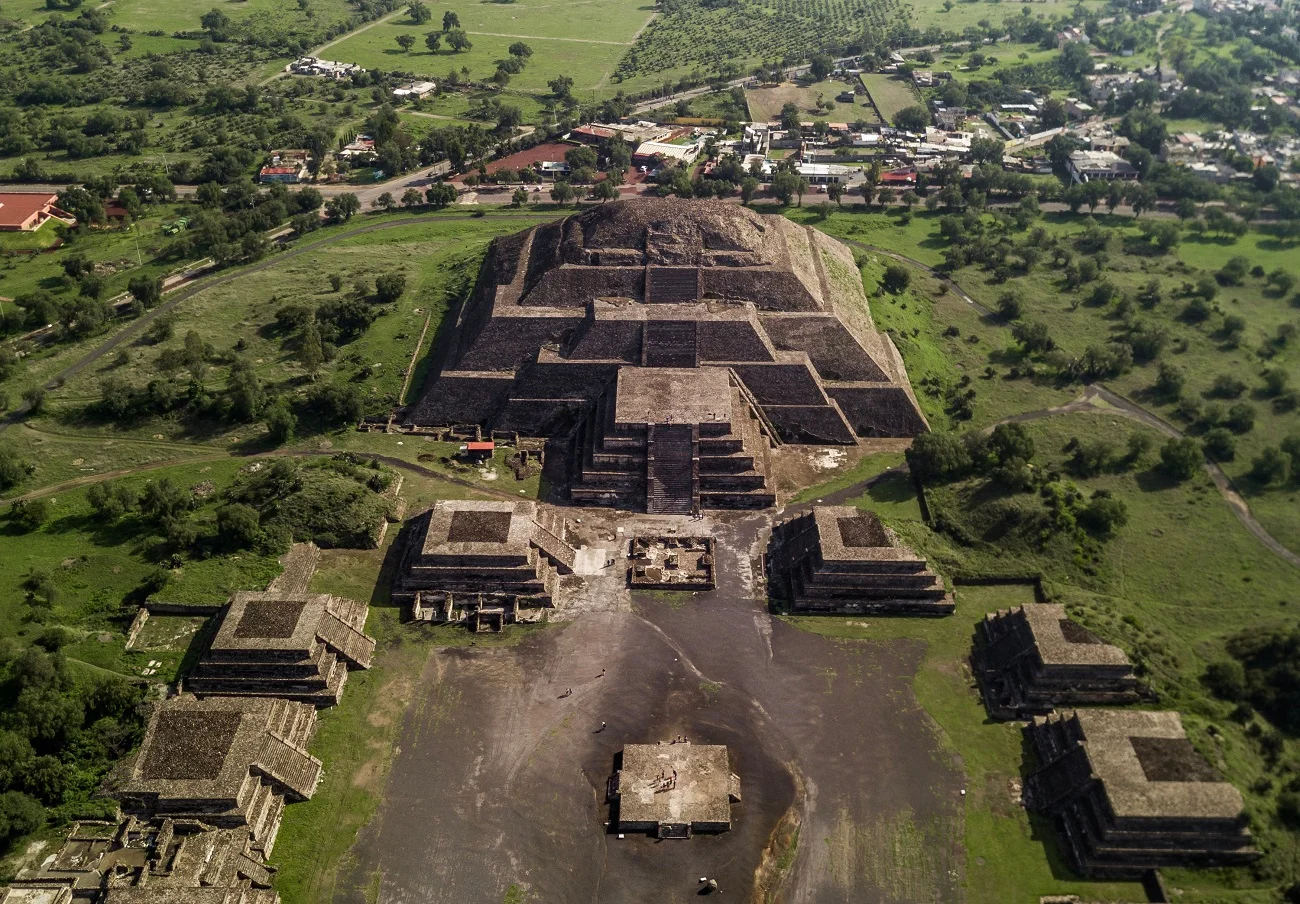Teōtīhuacān, loosely translated as “birthplace of the gods,” is an ancient Mesoamerican city situated in the Teotihuacan Valley, Mexico.
The development of Teōtīhuacān can be traced to four distinct consecutive phases, known as Teōtīhuacān I, II, III, and IV.
During phase II (AD 100 to 350), Teōtīhuacān’s population rapidly expanded into a large metropolis. This phase also saw the construction of the Pyramid of the Sun, the Pyramid of the Moon, the Avenue of the Dead, and the Ciudadela with the Temple of the Feathered Serpent Quetzalcoatl.
The urban layout of the city exhibits two slightly different orientations, which resulted from both astronomical and topographic criteria. It was previously thought that the central part of the city, including the Avenue of the Dead, conformed to the orientation of the Pyramid of the Sun, while the southern part reproduces the orientation of the Ciudadela.
However, a new study by the National Institute of Anthropology and History (INAH), working in collaboration with the University of Tepeyac (UT), and the National School of Anthropology and History (ENAH), now suggest that the Pyramid of the Moon marked the astronomical orientation axis of Teōtīhuacān.
The team discovered that the vertices are aligned to the northeast with the summer solstice sunrise, and to the southwest with the winter solstice sunset.
On the longest day of the year, from the top of the Pyramid of the Moon, the Sun rises at dawn over the Xihuingo volcano (which functioned as an observatory to calibrate the calendar), while at dusk it sets behind Maninal hill, to the west.
“The volume of the Pyramid of the Moon established a proportional relationship with the perimeter delimitation of the space. This frontality contained the visuals as a longitudinal axis that visually finished with the facades of the other buildings,” said researcher, Montero García.
Header Image Credit : Shutterstock
Sources : INAH





